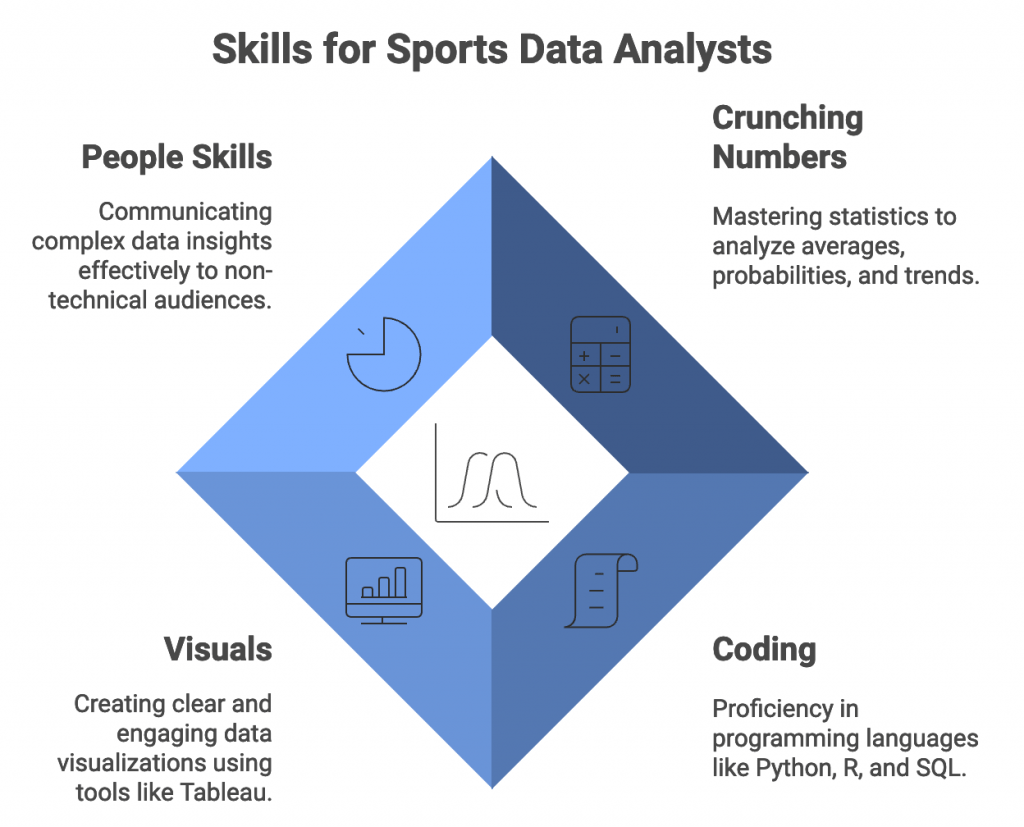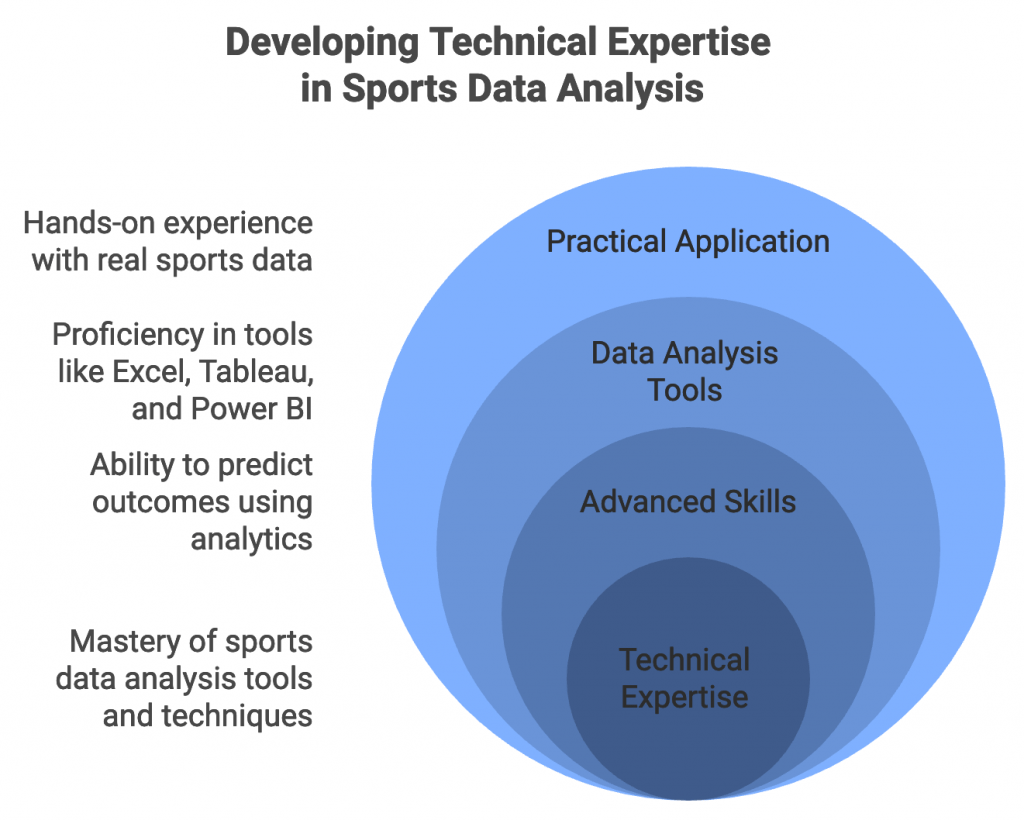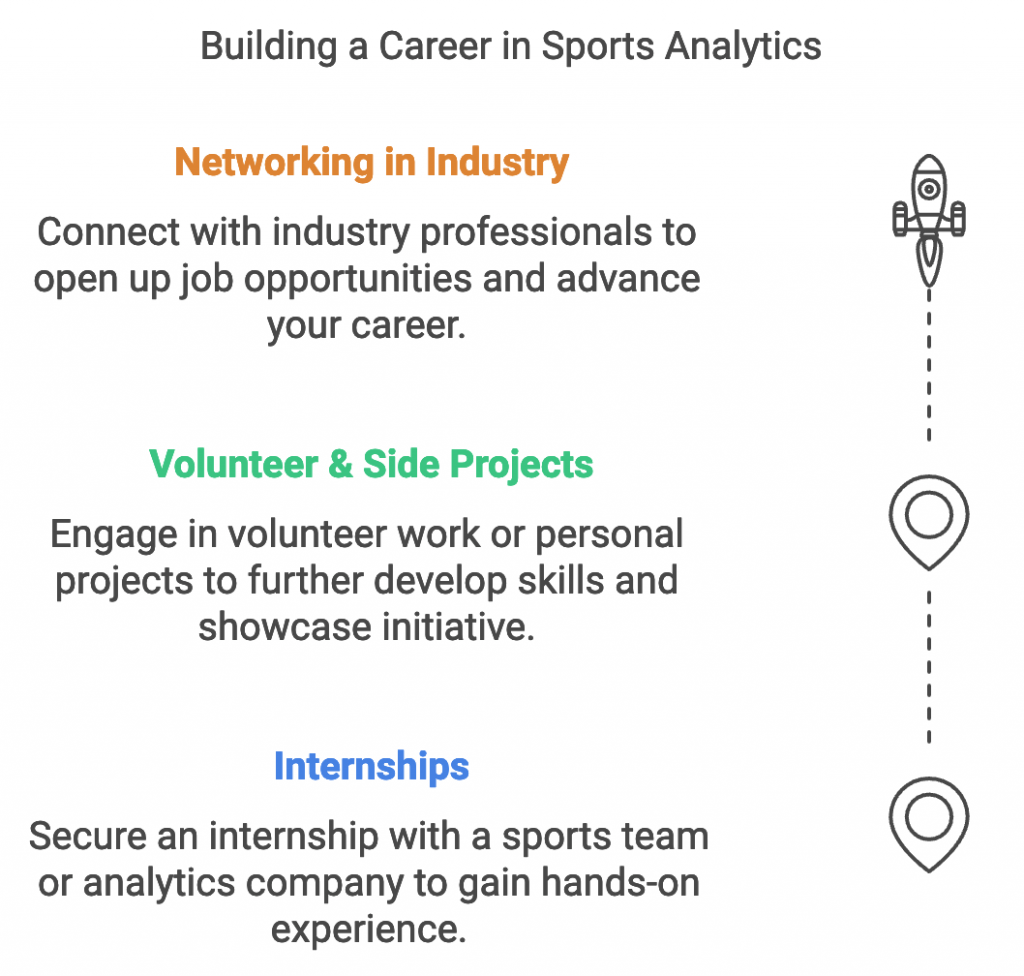Steps to Becoming a Data Analyst for a Sports Team
Ever wondered what makes a team go from good to flawless? It’s not just talent on the field; it’s the data in the background! Sports data analysts work behind the scenes to help teams spot trends, make better game plans, and pick the finest players. If you’re all about numbers and love the game, then being a sports data analyst is like having the best of both worlds. Imagine being the person who helps a team win just by breaking down the stats. It is a fantastic opportunity, isn’t it?
Step 1: Get the Right Education and Skills
Initially, you’ll need to hit the books (don’t worry, it’s all worth it). Most sports data analysts have degrees in fields like Data Science, Statistics, or even Sports Management. You’re building the foundation to become a data whiz.
But wait – it’s not just about what you study. Here are some skills you’ll need in your toolkit:
- Crunching Numbers. Stats are big, so get comfortable with averages, probabilities, and trends.
- Coding. Python, R, and SQL are like your secret weapons. If you can code, you can handle big data like a pro.
- Visuals. Not everyone on the team speaks “data,” so knowing how to make charts with tools like Tableau or Excel is critical.
- People Skills. Yep, you’ll be chatting with coaches and players, so you’ll need to break down complex stuff into simple ideas.
Got all that? Sweet! Now, it’s time to build on it.

Step 2: Develop Technical Expertise
This is where you level up! Now that you know the basics, you’re ready to dive deeper into all the fun tools and techniques that sports data analysts use daily.
Data Analysis Tools
Start with the classics: Excel for simple stuff, then work up to Tableau and Power BI for creating incredible visuals. These tools let you turn raw data into insights that teams actually understand. Some sports teams even use special software just for player and game data, like STATS Perform – something to look into if you want to get fancy.
Advanced Skills
Want to predict the future? (Kind of.) You can go beyond what happened last season and help forecast what’s coming with skills like machine learning and predictive analytics. There are tons of open sports datasets and online challenges (like on Kaggle) where you can practice making predictions with real data.
Practical Application
If you’re a superfan of a particular sport, practice by analyzing data from that game. Look up sports APIs or find free datasets to dig into. The more you mess around with real data, the better you get – and it’s also super fun.

Step 3: Gain Real-World Experience
Time to get out of the classroom (or YouTube tutorials) and into real-world scenarios. Here’s where you start working with actual sports data and showing teams what you’re made of.
Internships
Landing an internship with a sports team or analytics company is golden. You’ll learn the ropes from people in the field and maybe even get to work on game-day data analysis. It’s also a great way to meet people who could help you later score a job.
Volunteer and Side Projects
If internships aren’t available, don’t sweat it. Try volunteering for a local sports team or school. Even better, start a side project. Analyze stats from your favorite team and post them online, or create a blog where you break down the numbers. Side projects make you stand out; you’ll learn a ton by doing them.
Networking in the Industry
Sports analytics is all about whom you know. Connect with other analysts on LinkedIn, join sports data communities, or attend sports analytics events. A plethora of opportunities pop up just because you know the right person at the right time.

Step 4: Specialize in Sports Analytics
So, you’ve got the basics down, and you’re starting to get experience. Now’s the time to narrow your focus on sports and go from “data analyst” to “sports data analyst.”
Niche Knowledge
Every sport has its set of stats and quirks. Knowing the game’s specific numbers gives you an edge, whether you’re into football, basketball, or soccer. For instance, football focuses on yards and tackles, while basketball cares a lot about rebounds and shooting percentages. Getting these nuances down is a game-changer (literally).
Learning From the Pros
There are online courses just for sports analytics that’ll teach you tricks of the trade. Check out platforms like Coursera or Udacity for short courses that dive into sports data analysis. Moreover, follow industry leaders online. They’re constantly sharing tips and new insights you can learn from.
Follow the Game
Get into it! Watch games, analyze matches, and keep up with the latest team and player news. The more you know the game, the better you understand the data. Being both a fan and an analyst makes you a total asset to any team.

Step 5: Create a Sports Analytics Portfolio
Pay attention to your portfolio as your MVP. This is where you show off everything you’ve learned and prove why you’d make an excellent data analyst for sports teams.
Project Showcase
Fill your portfolio with projects that showcase your skills, like analyzing player stats over a season or predicting game outcomes. Choose projects that would actually be useful for a team. Explain why your analysis matters, whether spotting trends or identifying a player’s strengths.
Visual Appeal
Great analysis is one thing; great visuals improve it. Use tools like Tableau or Power BI to create dashboards, graphs, and charts that tell a story. Show that you can take raw data and turn it into something everyone on the team can understand.
LinkedIn & GitHub
Once your portfolio is ready, make sure people see it! Share your work on LinkedIn and connect with other professionals. Post your code and projects on GitHub, so hiring managers can see your capabilities.
Step 6: Apply for Data Analyst Roles with Sports Teams
Are you ready to hit the ground running? When you have a flawless portfolio and some experience, it’s time to apply for that dream job.
Resume and Cover Letter
Make sure your resume highlights all your sports-related data experience and skills. In your cover letter, show your passion for sports and how your analysis could help a team win. Mention specific projects from your portfolio that prove your abilities.
Preparing for Interviews
Expect interview questions that dig into both your data skills and sports knowledge. Be ready to discuss a favorite analysis project and your approach to problem-solving, and maybe even answer some quick stats questions about the sport. Occasionally, they might even give you a data test – so practice staying cool under pressure!
Be Persistent
The sports industry can be challenging, so don’t be discouraged if it takes a few tries. Start with smaller teams, like minor leagues or colleges, to gain more experience. If you stay consistent, you’ll get there.
The Path Is Challenging but Rewarding
Becoming a sports data analyst isn’t a walk in the park, but it’s worth it if you’re passionate about sports and data. This role is for people who love the game and have the skills to dig into the numbers. With patience, hard work, and a solid plan, you could be the one making game-changing calls from behind the scenes.



